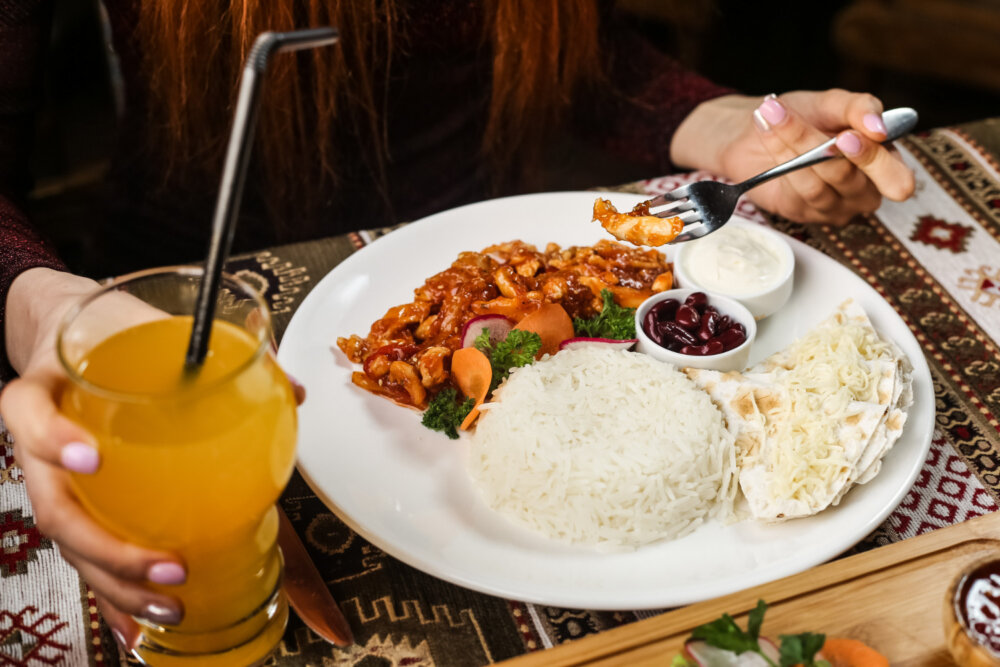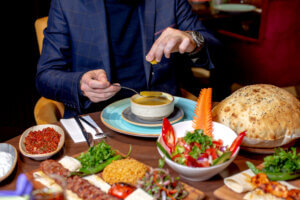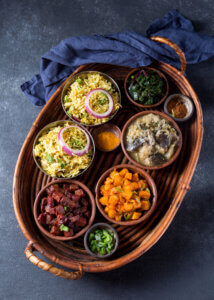In the vibrant heart of Sri Lanka, as the first light of dawn kisses the lush green landscapes, a symphony of aromas begins to unfold. The air is thick with the scent of coconut, sizzling curry leaves, and the unmistakable batter of hoppers whispering from rural kitchens to bustling city corners. The traditional Sri Lankan breakfast is not just a meal; it is an experience that connects people to their heritage, a flavorful tapestry woven from generations of culinary artistry.
A Taste of History
The origins of Sri Lankan breakfast dishes like hoppers and pittu are deeply rooted in the island’s rich tapestry of history. These dishes are more than sustenance; they are the embodiment of a cultural journey that has traversed centuries. The art of preparing hoppers, with their delicate lacy edges, was passed down through generations, often taught from mother to daughter, each family adding their own secret touch.
Pittu, on the other hand, reflects the island’s agricultural bounty, made from rice flour and coconut, it is a delicious testament to the local ingenuity in utilizing available resources. The preparation of these dishes is a ritual in itself, often accompanied by stories of ancestors and the land. As the sun rises, these dishes are laid out not just to nourish the body, but to feed the soul with historical continuity.
Ingredients or Key Elements
The magic of Sri Lankan breakfast begins with its ingredients, fresh and locally sourced, each playing a vital role in the symphony of flavors.
- Rice Flour: The foundation of both hoppers and pittu, lending a delicate flavor and texture.
- Coconut Milk: Rich and creamy, it is integral to the batter of hoppers and the moist texture of pittu.
- Coconut: Grated coconut is often mixed into pittu, adding sweetness and texture.
- Yeast and Sugar: Used in hopper batter to create a slight fermentation, giving it a unique tang.
- Spices: Curry leaves, black pepper, and cardamom infuse depth and warmth into accompanying curries.
Preparation or Practice
Preparing a traditional Sri Lankan breakfast is a sensory journey, a dance of flavors and textures. The making of hoppers begins with the gentle mixing of rice flour, coconut milk, yeast, and a dash of sugar. The batter is left to ferment, allowing the yeast to weave its magic, creating a subtly sour and aromatic mixture.
As the batter rests, the kitchen becomes a haven of fragrant spices. Curry leaves crackle in hot oil, their aroma a spicy serenade. The batter, once ready, is ladled into a small, bowl-shaped pan, swirling to form the characteristic thin, crispy edges and a tender center.
Pittu, meanwhile, is a tactile experience. The rice flour and grated coconut are mixed with a careful splash of water, forming a crumbly mixture. It is then steamed in a bamboo cylinder or metal mold, the gentle heat coaxing the flavors to meld into a soft, fragrant cake.
Symbolism or Local Meaning
In Sri Lanka, breakfast is not merely a daily ritual but a celebration of community and continuity. Hoppers, with their welcoming bowl shape, symbolize hospitality and sharing, a staple at family gatherings. Pittu, often shared among neighbors, is a reminder of the island’s agrarian roots and the importance of community bonds.
These dishes are a reflection of Sri Lankan resilience, creativity, and the ability to transform simple ingredients into culinary masterpieces. They hold emotional significance, evoking memories of childhood, family ties, and the cultural fabric that unites the island’s diverse communities.
Where to Experience It
For those eager to immerse themselves in the authentic Sri Lankan breakfast experience, options abound.
- Local Homes: An authentic experience can be found in rural villages where families often invite travelers to join them in their morning meal.
- Street Vendors: The bustling streets of Colombo or Galle offer a vibrant atmosphere where vendors skillfully craft hoppers and pittu before your eyes.
- Restaurants: Renowned establishments like Upali’s in Colombo serve traditional breakfasts with a modern twist, ensuring authenticity with a touch of elegance.
- Festivals: During cultural festivals, breakfast dishes take center stage, offering a chance to taste these culinary delights amidst celebration and joy.
Tips for Travelers
When diving into the Sri Lankan breakfast experience, keep these tips in mind to ensure authenticity and respect for local customs:
- Embrace Local Etiquette: Use your right hand for eating, as is traditional, and be open to trying new flavors.
- Seek Authenticity: Opt for local eateries and home-cooked meals to experience genuine flavors.
- Respect Meal Times: Breakfast is typically served early; arriving late might mean missing out on the freshest dishes.
- Be Adventurous: Don’t hesitate to try different accompaniments like spicy sambols or coconut relishes.
Conclusion
As the last morsel of hopper is savored, and the warm embrace of pittu fades into memory, what lingers is more than just a taste. It’s the essence of Sri Lanka itself—a land where every meal is a celebration, every dish a story, and every breakfast a new beginning. Traditional Sri Lankan breakfast is a culinary journey through time, a sensory adventure that invites you to connect deeply with the island’s soul. As you leave the table, you’re not just full; you’re part of a timeless narrative, ready to be shared with the world.




